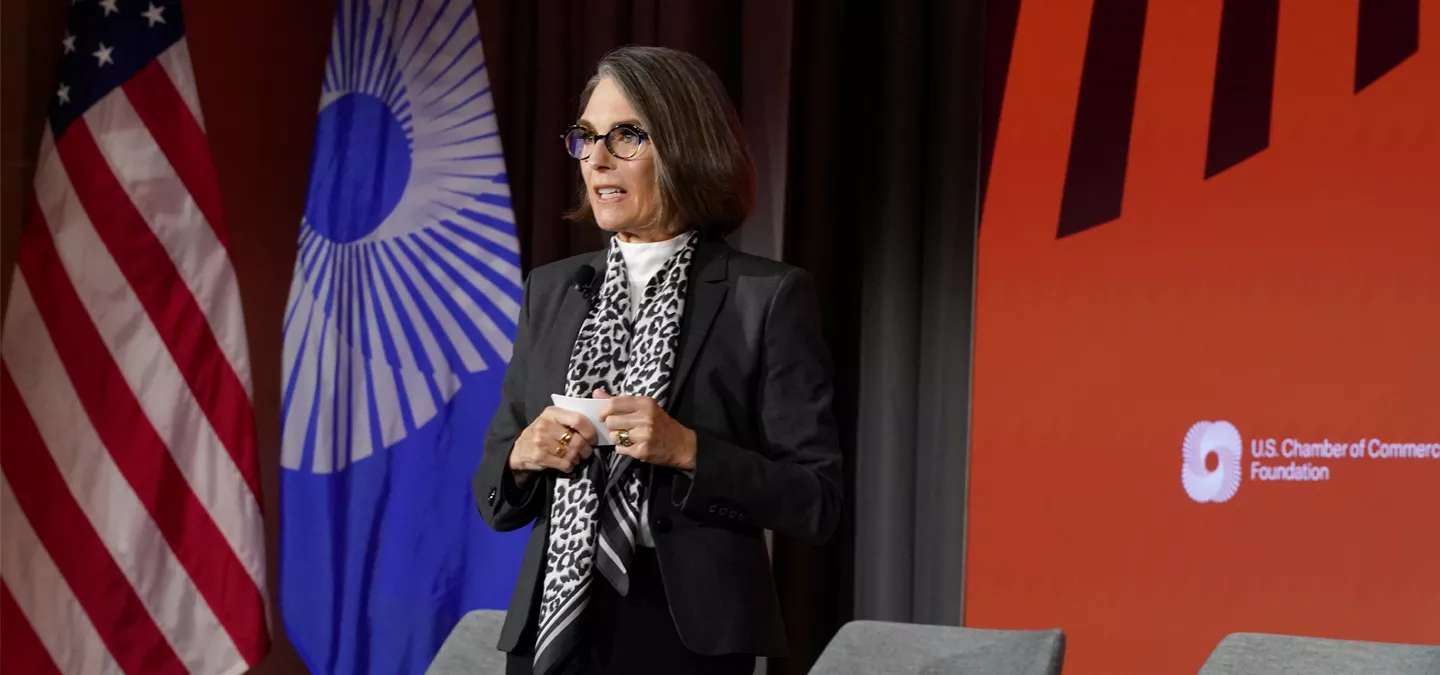The Vital Role of Preventive Care in Overall Wellness

Dr. Susan Harvey discusses investing in women’s well-being at the U.S. Chamber of Commerce Foundation’s International Women’s Day Forum.
Do you know someone whose life was saved by preventive care?
Perhaps their high blood pressure was observed and treated. Maybe their cancer was detected early through screening, resulting in minimal treatment and survival. You may know someone who was tested and treated for diabetes mellitus (DM). Perhaps you know a woman diagnosed with a sexually transmitted infection (STI), whose early treatment allowed her to have children later in life.
Now, consider situations when your family, friends, neighbors and work colleagues lacked access to, or did not receive, preventive care. You may recall tragic stories of suffering and loss in some of those cases.
Preventive care can make a life-changing difference. This truth leaps out from the findings of the Hologic Global Women’s Health Index, one of the world’s largest annual studies of this topic that draws directly from the experiences of women.
More than 1.5 billion women did not receive essential preventive-care checks in the past year, according to the latest estimate from the Index. That’s approximately the entire population of China. The more than 1.5 billion women worldwide did not get checked for:
- Cardiovascular disease, the leading cause of death among women and men globally.
- Any type of cancer, the second-largest killer of people worldwide.
- Diabetes, the sixth-biggest and fastest-growing killer.
- Sexually transmitted infections – including HPV, the main cause of cervical cancer, and HIV. More than 1 million STIs are acquired worldwide each day, according to the World Health Organization.
Why are so many women lacking preventive care in today’s world, and how can each of us do our part to change this alarming statistic?
The path to progress begins with recognizing that when it comes to preventive care, every country – from the highest-income to lowest-income nation – has much room for improvement. The Index shows that in all regions of the world, notable numbers of women put their health last because they worry about getting enough food for themselves and their families. Or securing adequate shelter.
Taking these insights from the Index, we see other similar challenges like dealing with destruction caused by bombs and missiles. Or grappling with the toll of climate change. Or struggling as victims of gender-based violence. Or lacking the financial resources or the time to see a medical professional. Or confronting language, cultural or other barriers to securing healthcare.
The United Nations has identified 17 key areas for improvement, called Sustainable Development Goals, by 2030. The success of all 17 categories is intertwined with the well-being of women. The Index directly addresses SDG 3, SDG 5 and SDG 10.
Quote from 2022 Report
“As the world faces cascading and interlinked global crises and conflicts, the aspirations set out in the 2030 Agenda for Sustainable Development are in jeopardy. With the COVID-19 pandemic in its third year, the war in Ukraine is exacerbating food, energy, humanitarian, and refugee crises – all against the background of a full-fledged climate emergency"
As a global champion of women’s health, Hologic helps to shift the trajectory away from such jeopardy. We step forward to provide a foundation for positive change: science-backed, actionable data from the Index. We actively share these insights with government, policy, business, nonprofit, academic and health leaders so they can be more specifically informed as they work to make women’s health a greater priority. We also use the Index’s unique findings to further our own longtime championing of women through innovative medical technologies, awareness-raising about the importance of early detection and treatment of disease, and efforts to reduce disparities that make it difficult to access preventive care.
As individuals, we are faced with these sobering data regarding preventive health. Yet, we can each take action to make a difference for ourselves and others. We can attend preventive care visits or volunteer in our communities to disassemble barriers to preventive care, such as food insecurity. When giving, think of charities that address barriers to preventive care.
I encourage you to learn more about the disparities faced by women by diving into the Hologic Global Women’s Health Index and sharing with your family, friends and work colleagues. Encourage others to actively engage in healthcare and be empowered to build relationships with their providers.
Written by Dr. Susan Harvey, VP of Global Medical Affairs

